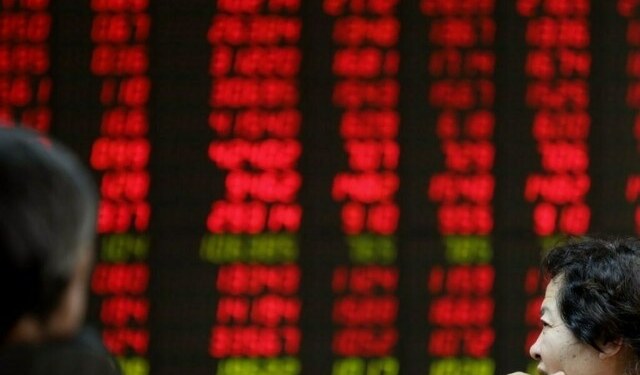By Marc Jones
LONDON (Reuters) – Alarm bells rang across world markets on Monday as a 9 percent dive in Chinese shares and a sharp drop in the dollar and major commodities panicked investors.
European stocks opened more than 3 percent in the red after their Asian counterparts slumped to 3-year lows as a three month-long rout in Chinese equities threatened to get out of hand.
Safe-haven government bonds and the yen and the euro rallied as widespread fears of a China-led global economic slowdown and currency war kicked in.
“It is a China driven macro panic,” said Didier Duret, chief investment officer at ABN Amro. “Volatility will persist until we see better data there or strong policy action through forceful monetary easing.”
With serious doubts now emerging about the likelihood of a U.S. interest rate rise this year, the dollar slid against other major currencies. It was last at 120.25 yen its lowest in three months.
The Australian dollar fell to six-year lows and many emerging market currencies also plunged, whilst the frantic dash to safety pushed the euro to a 6-1/2-month high.
“Things are starting look like the Asian financial crisis in the late 1990s. Speculators are selling assets that seem the most vulnerable,” said Takako Masai, head of research at Shinsei Bank in Tokyo.
Commodity markets took a fresh battering. Brent and U.S. crude oil futures hit 6-1/2-year lows as concerns about a global supply glut added to worries over potentially weaker demand from China.
U.S. crude was down 3 percent at $ 39.20 a barrel while Brent lost 2.4 percent to $ 44.40 a barrel.
Copper, seen as a barometer of global industrial demand, tumbled 2.5 percent, with three-month copper on the London Metal Exchange hitting a six-year low of $ 4,920 a tonne. Nickel slid 4.6 percent to its lowest since 2009 at $ 9,730 a tonne.
GREAT FALL OF CHINA
The near 9 percent slump in Chinese stocks was their worst performance since the depths of the global financial crisis in 2009 and wiped out what was left of the 2015 gains, which in June has been more than 50 percent.
The latest rout was rooted in investor disappointment that Beijing did not announce expected policy support over the weekend after its markets shed 11 percent last week.
Compounding the real-time falls all index futures contracts slumped by their 10 percent daily limit, pointing to more bad days ahead.
MSCI’s broadest index of Asia-Pacific shares outside Japan fell 5.1 percent to a three-year low. Tokyo’s Nikkei was down 4.1 percent and Australian and Indonesian shares hit two-year troughs.
“China could be forced to devalue the yuan even more, should its economy falter, and the equity markets are dealing with the prospect of a weaker yuan amplifying the negative impact from a sluggish Chinese economy,” said Eiji Kinouchi, chief technical analyst at Daiwa Securities in Tokyo.
There was further evidence that developed markets were becoming synchronised with the troubles. London’s FTSE which has a large number of global miners and oil firms, was down for its 10th straight day, its worst run since 2003.
The pan-European FTSEurofirst 300, meanwhile, was down 3.1 percent by 0830 GMT at 1,382.15 points, wiping around 260 billion euros ($ 298.61 billion) off the index and taking its losses for the month to more that 1 trillion euros. [.EU]
U.S. stock futures also pointed to larger losses for Wall Street’s main markets, with the S&P 500, Dow Jones Industrial and Nasdaq expected to open down 1.8, 2.2 and 3.1 percent respectively.
“We are in the midst of a full-blown growth scare,” strategists at JP Morgan Cazenove said in a note.
($ 1 = 0.8707 euros)
(Additional reporting by Pete Sweeney in Beijing and Shinichi Saoshiro Hideyuki Sano in Tokyo; editing by John Stonestreet and Anna Willard)


























